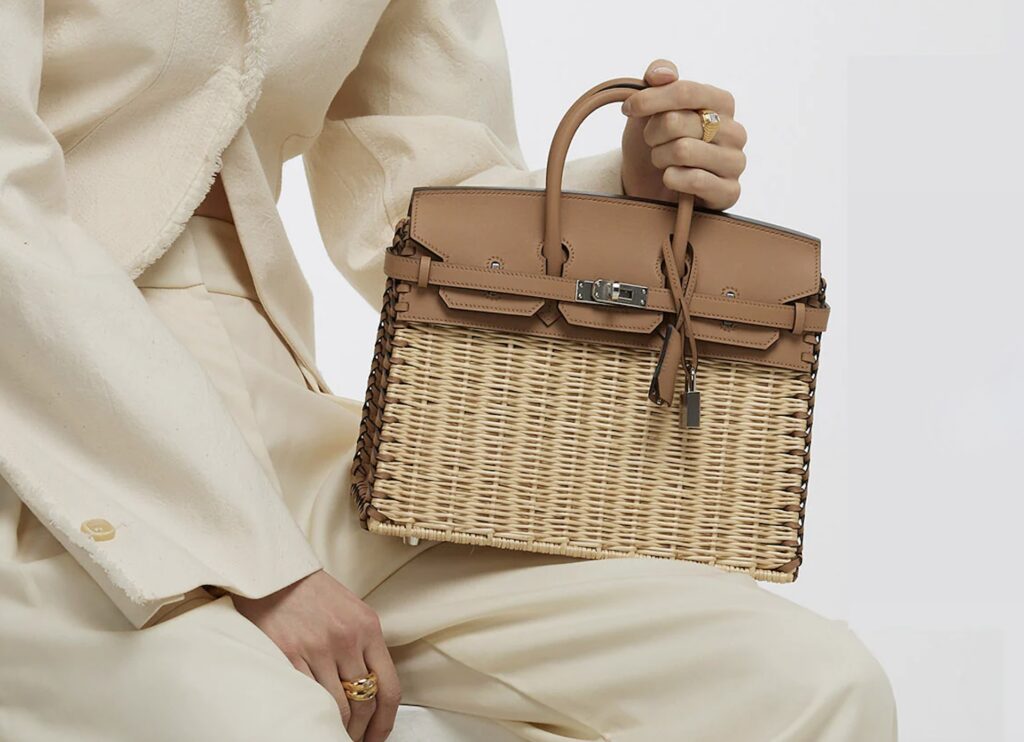The two individuals that are suing Hermès for allegedly tying the availability of its coveted Birkin bags to the sale of “ancillary” Hermès products – and allegedly violating U.S. antitrust and competition laws in the process – are looking to bulk up their claims against the French luxury goods brand. On the heels of Hermès lodging a motion to dismiss the headline-making case early this month, Plaintiffs Tina Cavalleri and Mark Glinoga are doubling-down on their claims in a newly-filed amended complaint, arguing that Hermès has sufficient power in the luxury goods market, which it has “systematically exploited … to engage in a deceptive and manipulative pricing scheme.”
In the amended complaint that the lodged with the U.S. District Court for the Northern District of California on May 30, as first reported by TFL, Cavalleri, Glinoga, and newly-added plaintiff Mengyao Yang are angling to chip away at Hermès’ arguments that they have not only failed to properly define a tied product market, but also have not alleged that it possesses market power in that properly defined tying product market, that it has excluded other sellers of the supposedly tied products, and that it has willfully acquired and maintained monopoly power.
Against that background, Cavalleri, Glinoga, and Yang assert in the amended complaint that the relevant market at issue is “the market and/or submarket of luxury handbags in the United States,” and that Hermès “exercise[s] substantial power” in this market as a result of the existence of its “iconic Birkin bag, limited production, and high demand.” Specifically, they argue that the famed fashion brand’s “dominant position in this market, characterized by high barriers to entry and brand recognition, allows [it] to control prices and engage in the anti-competitive conduct alleged herein to the detriment of consumers.”
Addressing Hermès’ market share in the luxury handbag market, the plaintiffs state that precise figures are not publicly available. However, the information that is available “strongly suggests” that Hermès has “significant presence in and dominance of the luxury handbag market” and that is maintains a “substantial share of the luxury handbag market in 2023.”
The plaintiffs point to an array of “statements and admissions [from Hermès] related to the relevant market and its market power,” including its 2023 Universal Registration Document, in which Hermès stated that it “holds a unique position in the luxury market” and a March 2024 letter to shareholders, in which Hermès stated it has “continued to consolidate its position as one of the highest-performing companies in the Luxury Products and Cosmetics sector in the MSCI ESG, Moody’s ESG, and Sustainalytics ratings.” (Note: It is not immediately clear (to me, at least) what the relevant link is between Hermès’ alleged dominance in the luxury handbags market and its performance on various ESG indices.)
Aiming to further distinguish the luxury handbag market from “the general handbag market,” the plaintiffs claim that luxury handbags, such as the Birkin bag, are “characterized by their hand-crafted or artisan construction, exceptionally high price points often exceeding tens of thousands of dollars, and unique production processes emphasizing high-quality materials and craftsmanship.”
While the plaintiffs argue that Hermès maintains a dominant position in the potentially quite broad “luxury handbag market,” they also appear to drive home their earlier argument that Hermès operates in a market entirely of its own. For instance, Cavalleri, Glinoga, and Yang contend that the Birkin bag’s “exclusivity, limited availability, and iconic status make it difficult to find a perfect substitute” for the Birkin bag. There may be some “potential substitutes for cross-elasticity purposes,” but these alternatives, which “primarily consist of the most high-end offerings from elite designer and luxury brands like Gucci, Prada, and Louis Vuitton, nonetheless lack the unique brand identity and exclusivity that define the Birkin bag, rendering them imperfect substitutes,” they argue.
This “limited substitutability reinforces the Birkin bag’s market power and enables [Hermès] to engage in anti-competitive practices,” per Cavalleri, Glinoga, and Yang.
As for Hermès’ allegedly illegal activities, the plaintiffs claim that the company has “exploited the unique characteristics of the luxury handbag market, including its relative inelasticity and affluent consumer base, to engage in a pattern of anti- competitive conduct.” In particular, they argue that “by leveraging the Birkin bag’s unique brand identity, craftsmanship, and exclusivity, which are not easily replicated by other high-end brands, [Hermès has] have created a market with limited direct substitutes, enabling them to maintain supracompetitive prices and engage in unlawful restraints of trade, including the illegal tying arrangements alleged herein.”
“This predatory practice not only drives up the true price of the Birkin bag – which includes the cost of these coerced ancillary product purchases – but also generates additional revenue for [Hermès] from consumers who never ‘qualify’ and are left with Hermès ancillary products that they never would have purchased but for their desire to acquire a Birkin bag,” the defendants argue. “This scheme represents a blatant abuse of market power and a deliberate deception of consumers, resulting in substantial financial harm to the class [of potential plaintiffs].”
The case is Cavalleri, et al. v. Hermès International, et al., 3:24-cv-01707 (N.D. Cal.)











